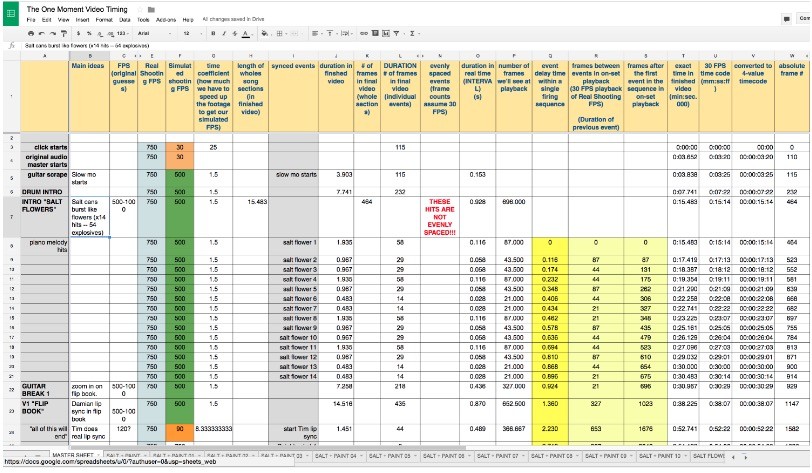An American rock band originally from Chicago, OK Go is composed of Damian Kulash, Tim Nordwind, Dan Konopka and Andy Ross. The band is known for its often quirky and elaborate one-take music videos. They had mild to middling success until they started making more interesting/experimental music videos.
OK Go has become famous for their creative and often low-budget music videos, most of which have been promoted through YouTube. Many of these have become viral videos including the 2006 video for “Here It Goes Again”which won a Grammy Award for Best Music Video in 2007. The band performed a complex routine with the aid of motorized treadmills, and has received over 50 million views on YouTube four years later.
The band’s video for Needing/Getting, released February 5, 2012 in partnership with Chevrolet, debuted during Super Bowl XLVI and has over 32 million views on YouTube. Many of the videos also use long or single-shot takes, which Salon‘s Matt Zoller Seitz claims “restore[s] a sense of wonder to the musical number by letting the performers’ humanity shine through and allowing them to do their thing with a minimum of filmmaking interference“.The success of OK Go’s music first won the band the 14th Annual Webby Special Achievement Award for Film and Video Artist of the Year.The video for “This Too Shall Pass” was named both “Video of the Year” and “Best Rock Video” at the 3rd annual UK Music Video Awards.”This Too Shall Pass” won the LA Film Fest’s Audience Award for Best Music Video,UK MVA Awards – Music Video of the Year Winner 2010, among others.
The band has worked with directors including Francis Lawrence, Olivier Gondry, Brian L. Perkins, Scott Keiner, and Todd Sullivan. The videos have been screened and displayed at museums, art galleries, and film festivals around the world including the Guggenheim Museum, the Museum of the Moving Image, the Edinburgh International Film Festival, the Los Angeles County Museum of Art, the Los Angeles Film Festival, and the Saatchi & Saatchi New Director’s Showcase.
The video for “I Wont Let You Down” is objectively the first to feature the use of a UAV drone to film a whole music video. There are many other examples of OK Go pushing the boundaries between music video and experimental art (stop motion toast being particularly memorable), companies give large sponsorship to them for features in their videos or for them to be in a stylized ad campaign. Their blend of inoffensive middle of the road indie music is greatly uplifted in the public domain by viral videos which are in themselves a very clever marketing tool. I think it’s fair to say no one would remember OK Go if they hadn’t got on their treadmills back in 2006 and their subsequently more interesting (and expensive) videos that have followed.
Their most recent video focuses on the super slow-mo trend that is both a hit on YouTube and with the general consumer as more and more devices can record at higher frame rates. A large amount of planning and calculations has evidently gone in to this video to get the sound and visual synchronization. What’s perhaps most impressive is how well they managed to sync up the song with the incredibly fast “events,” of which there are exactly 318. So how did they do it?
“We used very precise digital triggers to set off several hundred events in extremely quick succession. The triggers were synchronized to high speed robotic arms which whipped the cameras along the path of the action,” Kulash explains on the band’s official website. “Though the routine was planned as a single event, currently no camera control systems exist which could move fast enough (or for many sections, change direction fast enough) to capture a movement this long and complex with a single camera, so the video you see connects seven camera movements.”

This spreadsheet consists of dozens of connected worksheets feeding off of a master sheet 25 columns wide and nearly 400 rows long. In Kulash’s words, it “calculates the exact timing of each event from a variety of data that related the events to one another and to the time scale in which they were being shot.”
On top of this intricate web of events, many were shot at different speeds. Each section was shot at a constant rate, but between the events they toggled from one speed to another.
Kulash breaks it down further: “When the guitars explode, we are 200x slower than reality (6,000 frames per second), but Tim and Andy’s short bursts of lip sync (Tim twice and Andy once) are only 3x slower than real life (90 frames per second). The watermelons are around 150x, and the spray paint cans are a little over 60x.”